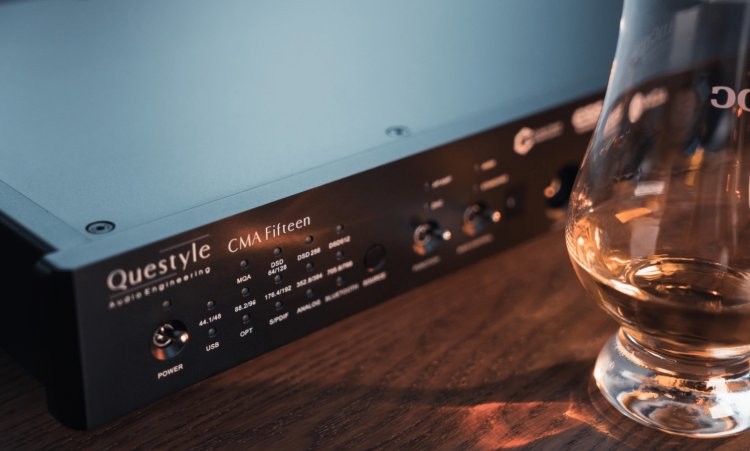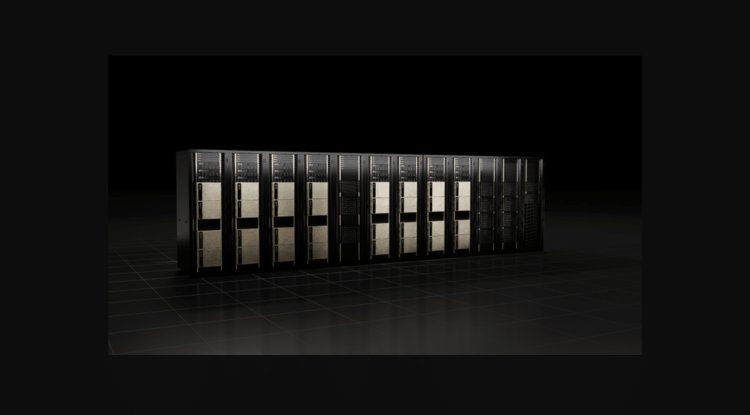Questyle CMA Fifteen DAC And Headphone Amp

Jason Wang, the creator of Questyle, has built a solid name in the industry for his constant approach to refining proven technology. He is currently presenting a fresh increase in the Questyle approach with the new DAC/headphone amplifier CMA Fifteen. Not only do headphone fans receive their money's worth from his new high-tech flagship.
Because of the lack of crossover distortion between the half-waves, many believe the Class A amplifier principle to be the silver bullet in terms of sound, but it is extremely inefficient in terms of energy.
Switching amplifiers based on the Class D principle, on the other hand, are known to be less melodious. Regardless of generally greater measured values and maximum energy efficiency.
This "prejudice" was simple to understand with one's own ears for many years. However, ongoing advancements in the field of Class-D, as well as fresh insights into the multiple variables within a circuit, are blurring the boundaries.

Even if we are not dealing with a corporation with decades of history and tradition, people familiar with the brand will recognize the CMA Fifteen as a real Questyle. The device provides an extraordinarily high-quality impression despite its small size, with a 10 mm thick aluminum coating and an all-around excellent housing finish.
Of course, at 2,500 USD, the Fifteen isn't exactly a low-cost DAC. However, only a few competitors in this price bracket can equal its beauty and material quality. A true hand adornment.
The front is adorned with numerous holes for toggle switches, LEDs, headphone connectors, and volume buttons, as is customary for Questyle.
This gives the appearance of a studio component, but the black housing has the problem of making the sometimes very small lettering difficult or impossible to see in low light.

The branding for Current Mode Amplification, the ESS chip put inside, and MQA, on the other hand, is way too conspicuous for my liking. But we don't pass judgment on matters of taste…
A motorized Alps pot is attached to the smooth-running volume knob. There is also an infrared remote control provided. This offers control over the input choices in addition to volume and mute, but it also has a slew of unassigned buttons.
Furthermore, it is not very clear and, with its plastic appearance, does not fit in with the Fifteen's super-solid housing. However, it is far superior to having no remote control at all.
The three headphone connectors are a unique feature. One includes a balanced 4.4mm connector, a balanced XLR4, and an unbalanced 6.35mm jack socket for the future Pentaconn format. The Fifteen shares these and the rest of the controls with the Twelve model, from which it would be difficult to tell apart at first glance if not for the enormous brand imprints.
We also know that the Twelve has four switches for adjusting headphone gain on the underside. Significant variances are only visible when looking at the back.
Three things stick out in this case. The Fifteen, unlike the Twelve, has an analog cinch input, which greatly expands its adaptability. With the digital connections, there is no digital output.

In addition to the well-known USB-B audio input, a USB-C connector is now available. This makes it possible to connect the Fifteen to computers or notebooks that no longer have USB-A connections.
Or, to be even more versatile, for direct connection to an iPad with a USB-C port or cellphones that enable an OTG connection (On-The-Go). Apple iPhone 11 with a USB-C to Lightning cable, on the other hand, does not identify the Fifteen as an output device.
The Fifteen's C connector takes precedence over the B connector. When you connect a suitable device, such as an iPad Pro, the B socket is deactivated.
The C-cable can be left hooked into the Questyle without an iPad connected, and music can be heard through the B-socket. This makes rapid iPad connections easier in between because you don't have to disconnect the wire from the back all the time. In case you're wondering, yes, this is a way to listen to Apple Music Lossless with an iPad and Questyle.
The third noticeable difference between the Twelve and the KHV is that instead of a 5 GHz module for a proprietary wireless connection, Questyle uses a Bluetooth module with LDAC compatibility for wireless playback in its new flagship KHV.
Bluetooth does not support lossless, bit-perfect playing, but its practical appropriateness and consequently diversity of applications are unquestionably greater.

However, these are merely the Twelve's apparent distinctions; the true difference begins beneath the hood. This is the first time Questyle uses an ESS chip – as visible on the front – rather than the previously favored AKM.
In the Fifteen, only the ESS top model ES9038PRO is in use. This chip supports PCM conversion at sampling rates of up to 768 kHz as well as real (native) DSD512 processing. The Fifteen, as indicated by the emblem on the front, also supports MQA, although as a full/core decoder.
Questyle reasoned, "If the DAC output is already current-mode, why not amplify the signal in current-mode as well?"
That is exactly what occurs at the CMA Fifteen. To achieve system-level "lossless purity," the ES9038PRO current-mode DAC is directly linked to four current-mode amplifiers that operate in a fully balanced mode.
That makes sense! In summary, current mode amplification provides the following key benefits: There are no potential differences, no capacitor effects, and the result is a significantly greater bandwidth. As a result, the Fifteen has incredibly low distortion levels and a very high signal-to-noise ratio.
Last but not least, the Fifteen is presently only available in black and not in the clever gold casing variation found on other Questyle models. As things stand, the Fifteen will most likely not have a "master" model variant with a ceramic mainboard like the Twelve and others. The availability of these unique boards has, as rumor has it, been disrupted. At least for the time being.





























